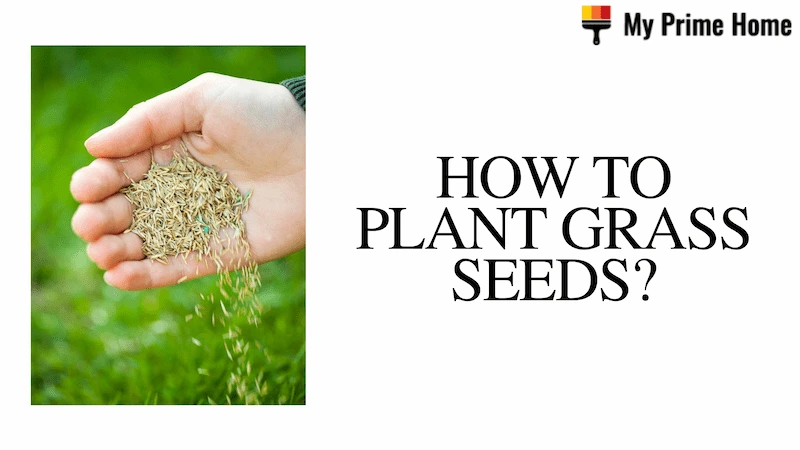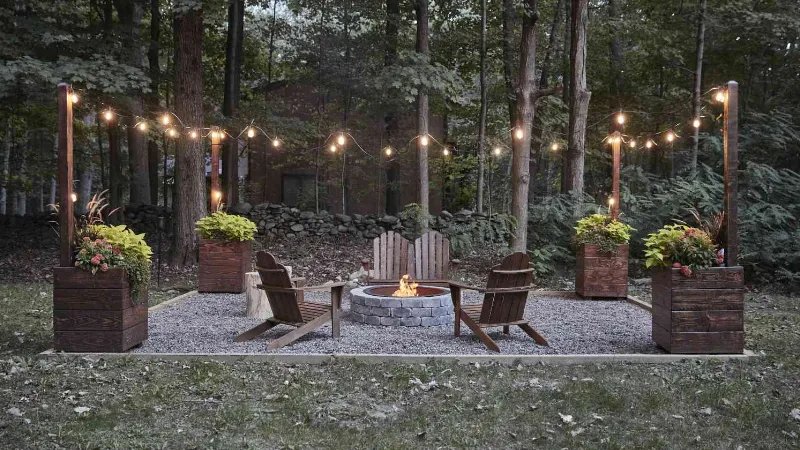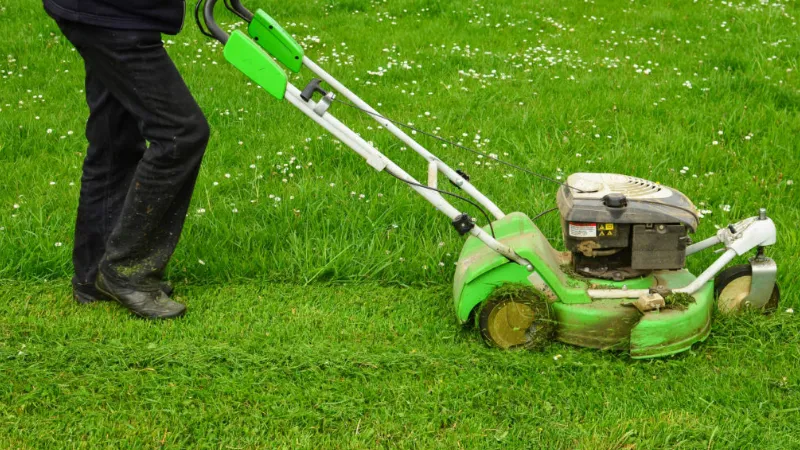Looking for information on how to grow sunflowers? You’ll find all the information you need in this step-by-step manual to grow sunflowers from seed in your own garden or allotment.
You need to know basic growing information, then choose suitable sunflowers to plant, decide when and where, and understand how to plant sunflowers. We will also show you companion plants, caring tips, and harvesting tips.
Please read on for more detailed information.
About Sunflowers
One of the most massive and colorful flowers is the sunflower. They add joy and a vibrant splash of color to the garden with their lovely, golden yellow petals. They make an excellent flower for kids to take care of and are also very simple to grow.
Sunflowers, which were first cultivated around 3,000 BC, provided food for American Indian tribes. They were harvested for their oil and nutrient-rich seeds, which were frequently ground and used as flour for making bread.
The seeds and their oil are still widely consumed today, in addition to the flowers that add beauty to our gardens or that can be cut and placed inside in a vase.
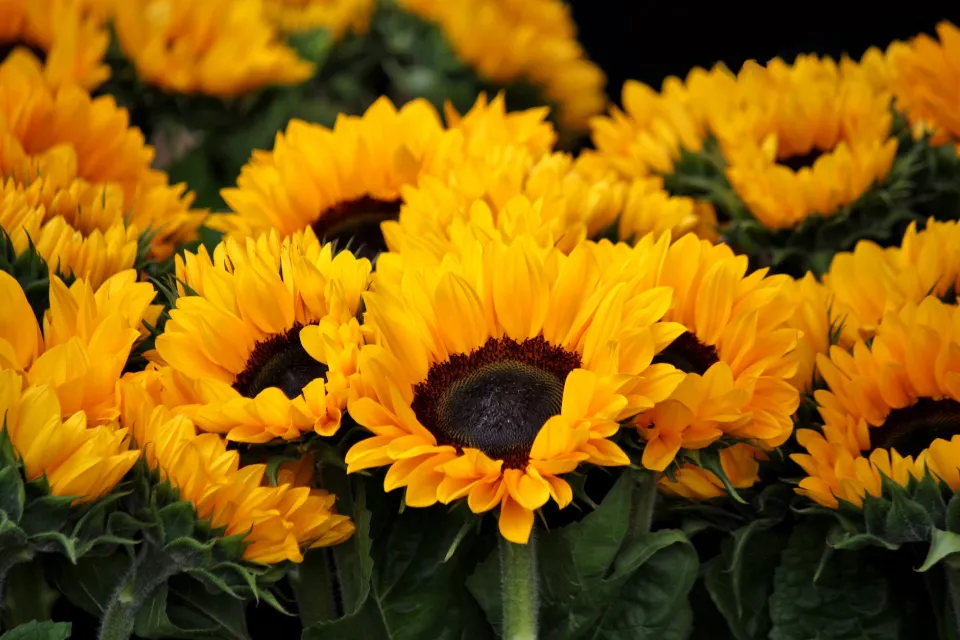
Growing Tips
- Full sun: 6 to 8 hours a day is ideal in a location protected from the wind.
- Soil: rich, well-drained soil.
- Sow seeds: after the risk of frost has passed.
- Okay, the soil temperature is 55°F (13°C) or higher.
- 70 to 75 degrees Fahrenheit (21 to 25 degrees Celsius) is the ideal soil temperature.
- Sowing instructions: check your seed packet.
- Depending on the variety, seeds should be spaced 6 to 36 inches apart and usually 1 inch deep.
- Germination: 2 to 10 days.
- Days to maturity:80 to 120 days.
- Container growing: yes, best for smaller, dwarf varieties.
- Fertilizer: amend the soil with good compost. Can also use granular, slow-release fertilizer as directed on the product label.
- Growing zones: Native to North America, sunflowers are cultivated as annuals everywhere from Alaska to Mexico.
- Grown also in Europe, Australia, New Zealand, and other sunny regions.
What Kind of Sunflowers Should I Plant?
There are countless types of sunflowers, including branching types with multiple stems. To find out how tall each variety grows and how many days it takes for it to mature, read the seed package or description. Your sunflower will bloom after that amount of time has passed since it was planted. It’s important to remember that the time spans between 50 and more than 120 days. Sunflowers can be sown repeatedly until early to mid-summer in many regions of the country for a longer harvest period. But if you plant too late in your hardiness zone, your sunflowers won’t mature before the first frost.
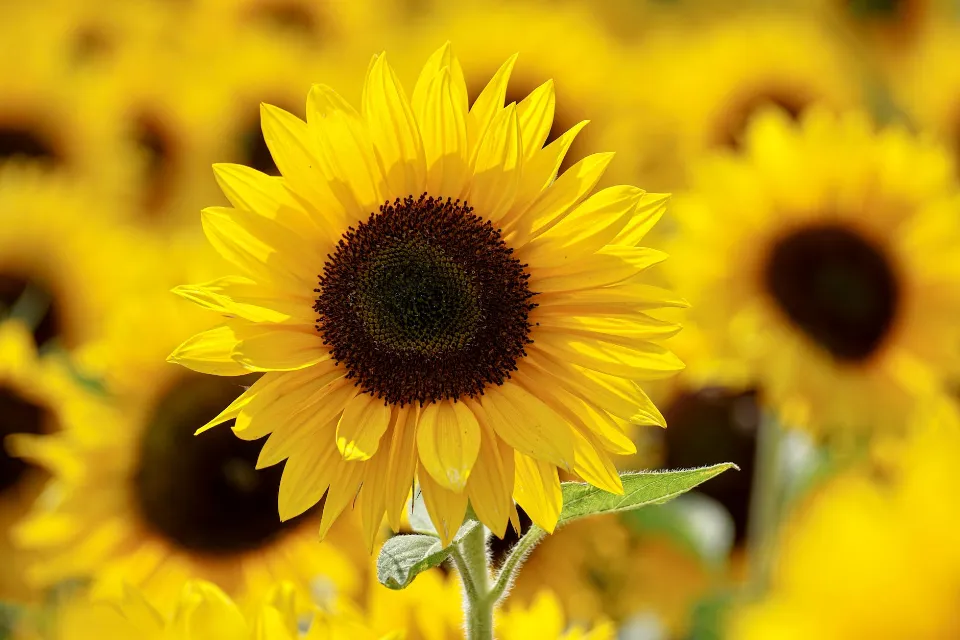
When to Plant Sunflowers?
Sunflower seeds can typically be planted between early March and mid-May, but this will depend on the variety, so always check the seed packet. The seeds must be protected to give them the best start until they have germinated and seedlings are about 5 cm tall; it is best to do this indoors to prevent frost damage.
Where to Plant Sunflowers?
- Choose a location with full exposure to the sun; 6 to 8 hours per day in a wind-free area are ideal.
- Make sure the soil is fertile, well-drained, and composted properly. You can also add a granular, slow-release fertilizer.
- Sunflowers have broad taproots that can penetrate a lot of soil.
- The plant will not reach its full potential size if something blocks the roots. The best way to grow plants in containers is to only use dwarf varieties.
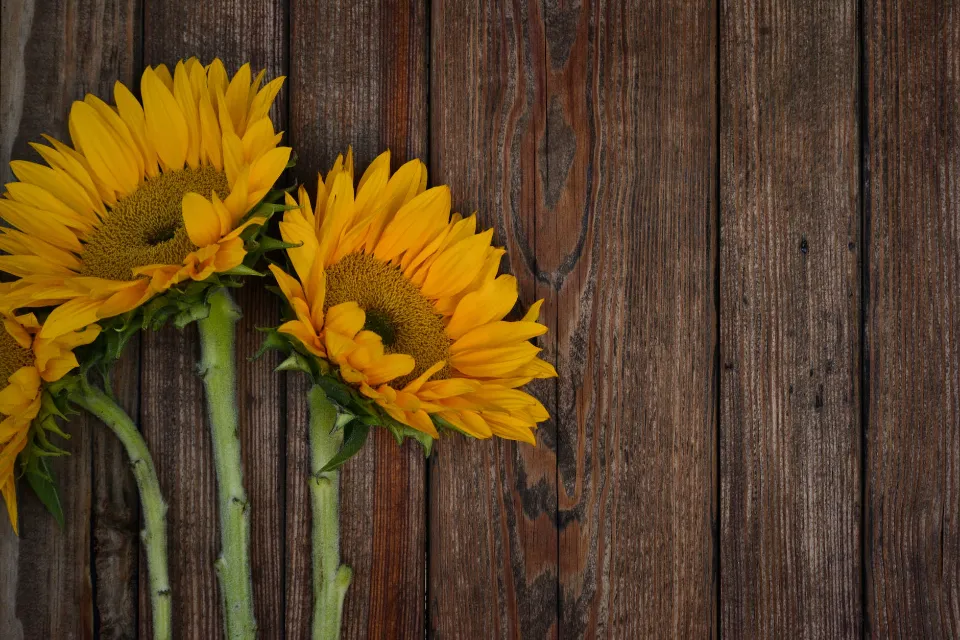
How to Plant Sunflowers?
Read the planting instructions on your seed packet when you are ready because different varieties of sunflower seeds require different care.
Three out of every four sunflower seeds should sprout because the average germination rate is 75%.
- Generally, sunflower seeds are sown 1-inch deep, spacing the seeds 6 to 36-inches apart, depending on the variety.
- Several seeds can also be sown closely together, and after a few weeks, the weaker seeds can be pulled out. Thinning out is the term used to describe this.
Spacing Examples
- In good soil with no other plants within 24 inches (two feet) in any direction (a four-foot diameter circle of growing space), a mammoth (tall, giant) sunflower performs best.
- Smaller sunflower varieties are more forgiving; some can thrive with as little as 6 inches of growing space (in all directions). However, more is preferable because a plant can grow bigger with better resources.
Protect Your Seeds
- To help keep moisture in the soil after planting, add 1-2 inches of mulch on top of the garden soil.
- Protect newly planted seeds with cloches, dollar store mesh waste baskets, or anything that will keep birds, squirrels and mice from digging up the seeds or slugsfrom eating the seedlings.
If you do cover your seeds or seedlings, make sure they have access to water, air, and light (after germination).

Growing in Containers
It’s best to only plant smaller varieties in containers that are smaller (under 10 inches wide) because larger sunflowers develop deep, tuberous roots.
You will need to add fertilizer to the container, as with most container growing. I use organic, slow-release fertilizers.
Here’s some examples of sunflowers that grow well in containers:
- Big Smile
- Elf
- Pacino
- Sundance Kid
- Sunspot
- Teddy Bear

Companion Plants
- Veggies
Because of their bright heads, sunflowers are a favorite among pollinators, and when they visit them, they may also visit other nearby flowers. Because of this, sunflowers make a good pollination companion plant for vegetables. Large leaves on some plants, like squash and zucchini, can help to keep pollinators away from the flowers. They have a better chance of being noticed if a pollinator magnet is used nearby. To prevent the soil around the roots of the sunflower from drying out too much, these plants also provide shade for the area and lower water evaporation.
Sunflowers are also effective at drawing aphids away from other plants. Tomatoes and peppers are two vegetables that can be severely harmed by aphids. These vegetables become less appealing to aphids when they are planted close to sunflowers. Thank goodness the sunflowers can withstand the aphids! Sweetcorn, kale, lettuce, onions, and other alliums are a few other vegetables that prosper when grown alongside sunflowers. Many herbs also make excellent friends.
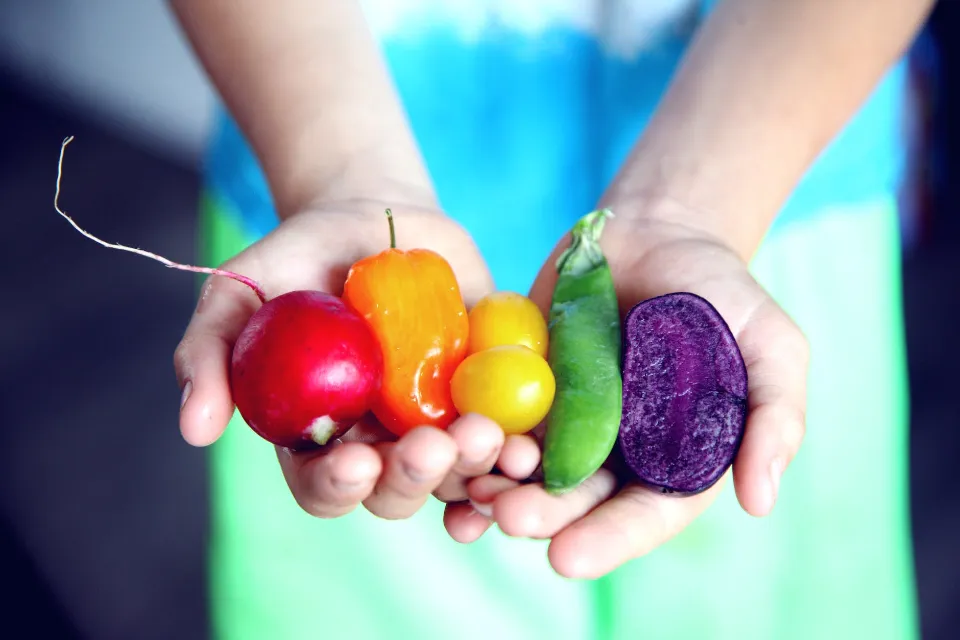
- Flowers
There are many flowers that work well with sunflowers, but it can still be a good idea to give them some room. Plant dwarf sunflowers 6 inches apart, and giant sunflowers closer to 2 feet.
Some flowers that grow well around sunflowers include:
- The purple coneflower, or Echinacea spp.)
- Rudbeckia spp.’s Black-Eyed Susan)
- Marigold
- Nasturtium
- Snapdragon
- Lobelia
- Daisies
Sunflower Care
Sunflowers are plants that require little care in my opinion. The only thing I typically do after they pass the seedling stage is water any plants that are in containers.
When the flower heads bloom, which typically takes place over a period of 5 to 10 days, some growers like to add fertilizer (I don’t). Additionally, the plant might need more watering at this time because it is absorbing a lot of it.

How Do I Harvest My Sunflowers?
You can cut off the entire sunflower, leaving about a foot of stem, when the heads nod downward and the tiny petals on top of the seeds have fallen off. In a room that’s warm, dry, and has little humidity, hang the flower head upside down. The drying process of the sunflower can take a few weeks. The seeds can be collected by rubbing your hand over the surface roughly; the seeds should fall out immediately. Additionally, you can leave the seed heads whole for the birds to eat.
Frequently Asked Questions
How Deep Do Sunflower Roots Grow?
Some of the larger sunflower varieties have roots that can extend as far as four feet. Everything is based on the sunflower’s size and whether the soil is conducive to the roots’ unrestricted growth. Coincidentally, larger varieties of sunflowers can grow taller the farther their roots can spread.
When Do Sunflowers Stop Growing?
Sunflowers stop growing once their flowers start to set seed. The stalks change from green to yellow to brown during this stage, and the flower heads begin to point toward the ground rather than east.
When is the Best Time to Plant Sunflowers?
When there is no threat of frost and the soil temperature is between 70°F and 75°F (21°C and 25°C), it is ideal to plant sunflowers.
The seeds can also be planted when the soil is consistently warmer than 55 degrees Fahrenheit (13 degrees Celsius). Simply put, germination will proceed more slowly.
What Month Do You Plant Sunflowers?
Sunflower seeds should be sown outside directly in June for many gardeners in cold climates. This is when the soil is warming up after the last frost. Faster growing sunflowers may still have time to mature if planted in July.
Do Sunflowers Grow Back Year After Year?
In contrast to perennials, sunflowers are annuals and do not regrow. They live their entire lives as annuals in just one growing season. If seeds fall to the ground, they might make it through the winter and grow the following year. The alternative is that you must plant new seeds every year.
How Late Can I Plant Sunflowers?
Sunflower varieties and the date of your typical first frost will determine how late you can plant them. Between 50 and 120 days (3 to 4 months) are typically required for sunflowers to mature from seed. Decide on a variety that will work with the number of days you have left before the first frost.
Can I Transplant Sunflowers?
Though transplanting sunflowers is not something they enjoy, it is possible early on. The seedlings transplant without a problem, but as the plant grows bigger, the roots become deep and extremely sensitive. Additionally, because they have taproots, it’s game over if one breaks during transplantation. So, you do so at your own risk after the seedling stage.
Summary: How to Grow Sunflowers?
You need to know basic growing information, then choose suitable sunflowers to plant, decide when and where, and understand how to plant sunflowers. We also show you companion plants, caring tips, and harvesting tips.
I wish you luck in planting sunflower seeds now that you have some useful advice. Here’s wishing you a garden full of gorgeous sunflowers, whether you’re getting ready for your garden this year or intend to add sunflowers next year.
If you have any questions, please leave a comment. My Prime Home tries to give you the best home improvement information. Don’t forget to share the post. Thank you for reading.
READ MORE:

